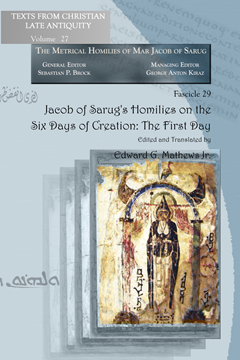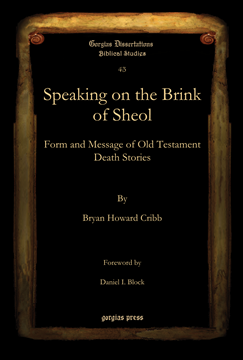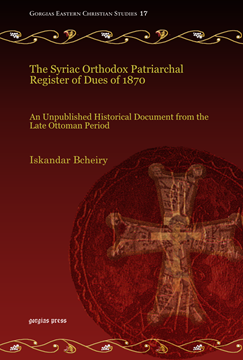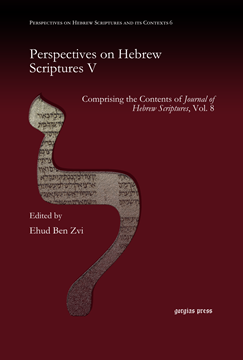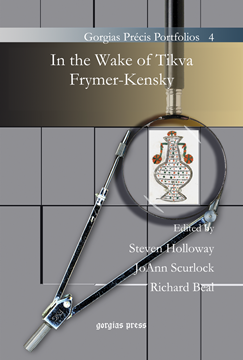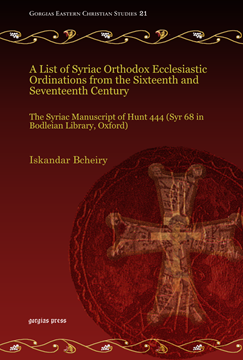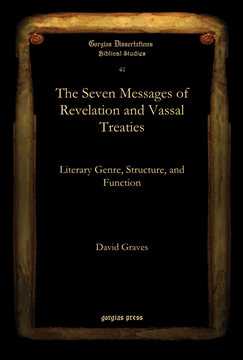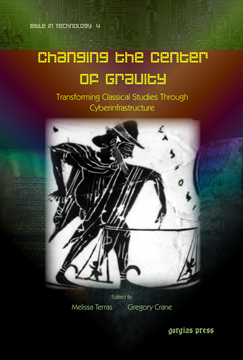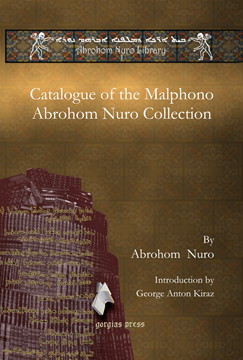Jacob of Sarug’s Homilies on the Six Days of Creation (The First Day)
The First Day
Edited and Translated by Edward G Mathews Jr
Series: Texts from Christian Late Antiquity 27
ISBN: 978-1-60724-323-6
Jacob of Sarug's (d. 521) homily constitutes the first example of a Hexameron, or Commentary on the Six Days of Creation, in Syriac literature. This edition presents Jacob’s comments on the first day, Gen. 1:1-5. The volume constitutes a fascicle of The Metrical Homilies of Mar Jacob of Sarug, which, when complete, will contain the original Syriac text of Jacob's surviving sermons, fully vocalized, alongside an annotated English translation.
$34.00 (USD) $20.40 (USD)
Speaking on the Brink of Sheol
Form and Message of Old Testament Death Stories
By Bryan Howard Cribb; Foreword by Daniel I. Block
Series: Gorgias Biblical Studies 43
ISBN: 978-1-60724-671-8
Since its inception at the beginning of the twentieth century, form criticism has diminished in popularity and use in recent years. Bryan H. Cribb’s studies demonstrates that, if appropriately modified, form criticism still has much to add to Old Testament studies. Using a synchronic and inductive approach to the text, Cribb engages in a form critical study of nine “death stories” in the Old Testament. In so doing, he not only provides substantial support for the existence of this genre, but he also shows how remarkably fruitful such a study can be in revealing the messages of these accounts.
$172.00 (USD) $103.20 (USD)
The Syriac Orthodox Patriarchal Register of Dues of 1870
An Unpublished Historical Document from the Late Ottoman Period
Series: Gorgias Eastern Christian Studies 17
ISBN: 978-1-60724-427-1
This monograph presents an unpublished historical resource in the form of a register of dues collected for the Syriac Orthodox Patriarchate during the second half of the nineteenth century. Bcheiry provides the original text, an English translation, and an extensive socio-economic study.
$178.00 (USD) $106.80 (USD)
Perspectives on Hebrew Scriptures V
Comprising the Contents of Journal of Hebrew Scriptures, Vol. 8
Edited by Ehud Ben Zvi
ISBN: 978-1-60724-326-7
This volume incorporates all the articles and reviews published in Volume 8 (2008) of the Journal of Hebrew Scriptures.
$268.00 (USD) $160.80 (USD)
In the Wake of Tikva Frymer-Kensky
Series: Gorgias Précis Portfolios 4
ISBN: 978-1-59333-977-7
This volume consists of 14 papers delivered by Assyriologists and biblical specialists at the 2007 Society of Biblical Literature congress in sessions devoted to the scholarly legacy of the late Tikva Frymer-Kensky, Professor of the Hebrew Bible at the Divinity School of the University of Chicago.
$148.00 (USD) $88.80 (USD)
Teachings on the Prayer of the Heart in the Greek and Syrian Fathers
The Significance of Body and Community
By Jill Gather
ISBN: 978-1-60724-729-6
The prayer of the heart is an early Christian contemplative tradition of striking profundity and beauty. Christian authors of the Greek- as well as the Syriac-speaking world placed the heart at the center of a mystical theology that viewed the body as a God-given instrument of divine ascent and the relational setting of Christian existence as an important means of experiencing God’s abiding inner presence. This work sheds light on the Syrian church’s approach to the mystery of the divine encounter.
$157.00 (USD) $94.20 (USD)
A List of Syriac Orthodox Ecclesiastic Ordinations from the Sixteenth and Seventeenth Century
The Syriac Manuscript of Hunt 444 (Syr 68 in Bodleian Library, Oxford)
Series: Gorgias Eastern Christian Studies 21
ISBN: 978-1-60724-621-3
The Bodleian Library in Oxford currently holds an unpublished historical document in Syriac containing precious historical information about the ordination of bishops, priests, monks, and deacons. Bcheiry gives the text and translation, and focuses on the importance of the data found in this historical list which he compares with other historical data found in other sources.
$158.00 (USD) $94.80 (USD)
The Seven Messages of Revelation and Vassal Treaties
Literary Genre, Structure, and Function
Series: Gorgias Biblical Studies 41
ISBN: 978-1-60724-568-1
This book argues that the genre of the seven messages in Revelation 2–3 is a hybrid prophetic oracle. This oracle is influenced by the Old Testament covenantal elements functioning as a set of lawsuit exhortations. Graves defends this by demonstrating the influence of the Ancient Near Eastern vassal treaty structure in the seven messages. Written in a readable format this work is both an excellent introduction to the book of Revelation as well as a fitting work for the apocalyptic specialist.
$200.00 (USD) $120.00 (USD)
Changing the Center of Gravity
Transforming Classical Studies Through Cyberinfrastructure
Edited by Melissa Terras & Gregory Crane
ISBN: 978-1-60724-881-1
The essays in this volume reflect a new generation of classicists hunting for new methods to understand and to disseminate ancient texts, both to increase the body of published information about classical Greek and Latin and also to encourage these languages to play an increased role in the intellectual life of humanity. In discussing areas as diverse as teaching, citation, criticism, collaboration, epigraphy, geography, grammar, lexicography, and digitization, this volume demonstrates the new scope and potential in Digital Classics research.
$202.00 (USD) $121.20 (USD)
Catalogue of the Malphono Abrohom Nuro Collection
By Abrohom Nuro; Introduction by George Anton Kiraz
Series: Abrohom Nuro Library 1
ISBN: 978-1-60724-332-8
The Abrohom Nuro library is arguably the richest private collection of Syriac material, especially containing rare titles published in the Middle East in the 1800s and early 1900s. Nuro presents here a checklist of the collection.
$141.00 (USD) $84.60 (USD)
